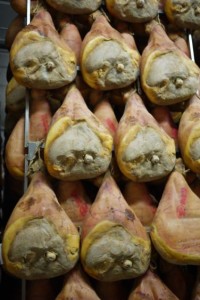by
The protagonist of “The Garden of the Finzi-Continis” a university student in the 1930 dines at “Pappagallo” and drinks coffee from “Zanarini,” the same historical buildings and establishment that you might find in Bologna today. The City name is “the learned ” thanks to the university funded in 1088 and “the fat” because of its agricultural wealth, splendour and culinary heritage, not to mention the sympathetic and friendly inhabitants.
The Bologna glories start from the ancient city. The two towers near Piazza Maggiore, S. Petronio and the University are inviting you to walk under the arcades, to discover a town centre still full of charm. One of the first discoveries are the attractive food delicacies of the area. A wealth of products which has not match elsewhere.
The local cuisine has an exclusive sense: the gastronomic tradition of Bologna is both wealthy and celebrated. Over time the tradition has expanded, the name “Bologna”, referring to the cuisine is now a synonymous of flavour and generosity. The Bolognese sauce along with the tagliatelle are still the building elements of Italian cuisine. Another cornerstone of this cuisine is the tortellini. They are still hand crafted one by one, produced according to ancient recipes (filed at the local Chamber of Commerce). Then there is the lasagne, thick and succulent as the colours of the Baroque painters seeing in the museum galleries. There is also the “Fritto Bolognese” fried vegetables sumptuous arpeggio between sweet and salty. Another dish is The Pinza a farmer sweet described for the first time in 1644.
Outside the city gates we have the circle of the Bologna hills that are just there to be discovered. An extended natural park and reserve. The beautiful countryside around the town of Monteveglio is particularly recommended. An ancient walled town, where you can find an abbey dedicated to of S. Mary.
The province of Bologna is cut in two by the Via Emilia. To the north lies the vast Padana plain defined by the River Reno, which stretches and leads to Ferrara. In the opposite direction leading south you will find limestone hills called Gessi Bolognesi, then continuing there are the mountain of the Apennine range. In the plain there is a thriving farming and horticultural industry, producing one of its leading product known as Mortadella di Bologna IGP (the of queen of Bologna). The same area also produces the potato of Medicina and the green asparagus of Altedo IGP, as for the wine we have the Montuno Doc produced from vineyards growing along the course of the river.
The vineyard becomes the protagonist on the Bolognese hills between the Panaro and ldice rivers. It is the area of the Colli Bolognesi Doc, which is divided into seven sub-denominations or geographical micro zones. In average vineyards are located between 100 and 300 meters above sea level, the soils is loose and clay is plenty.
Among the white wines, we have the native Pignoletto, along with a robust red Barbera.
Towards the eastern boundary farmers grow Albana di Romagna DOCG and DOC wines of Colli lmola. On the west, the tourist will find the ROUTES OF CHERRY AND CASTLES which is leaving the capital Bologna and leading to Vignola where the most beautiful places in the area can be admired.
Here the food is a mix of the classic Bolognese cuisine (fresh pasta and salami), with the attractions of autumn fruits such as mushrooms, truffles, chestnuts from the Apennines. Continuing on the mountain, an important destinations for the gourmet traveller is Savigno. It is named “The City of Truffles (white)” with a major festival and exhibition market in autumn. Also you can visit Castel di Casio, another center for the collection of precious fungi in valley of the Reno. Another renaissance town is Castel del Rio, in the upper valley of Santerno, from here you can also continue up from Imola Montanara along the road that leads to the impressive peaks a between Tuscany, the capital of the Chestnut (IGP) and Marrons.
Discover more from Emilia Delizia
Subscribe to get the latest posts sent to your email.
